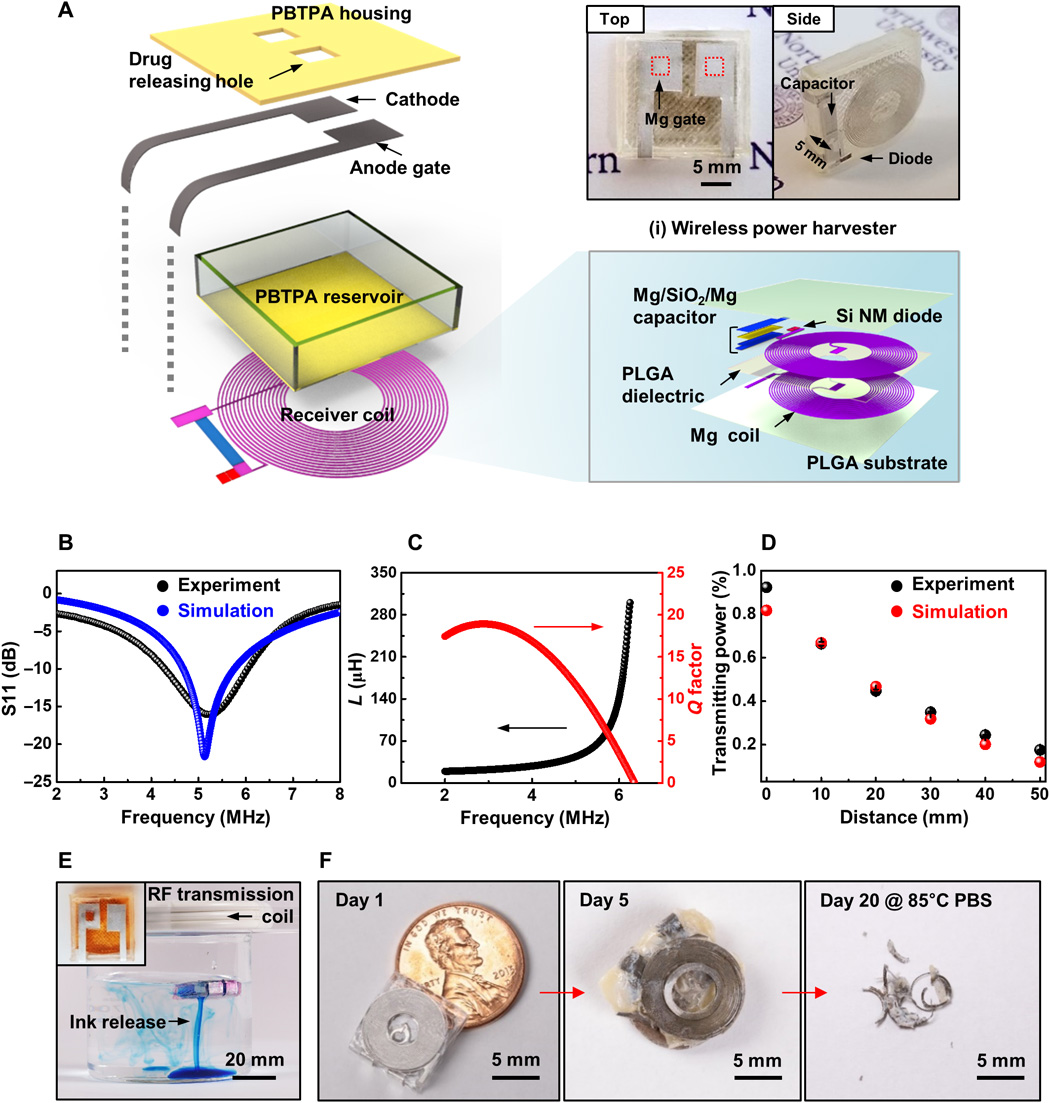Body
Dr. Colin Franz and Dom D'Andrea are co-authors on a newly-published research article, "Wirelessly controlled, bioresorbable drug delivery device with active valves that exploit electrochemically triggered crevice corrosion." The research was conceived and written in collaboration with Jahyun Koo and others in the John Rogers biomedical engineering lab at Northwestern University, and published in the August 2020 edition of Science Advances. The full text (and full list of authors) can be found here.
This innovative study demonstrates the utility of an implantable drug release device with wirelessly programmable pharmacokinetic control, made from bioresorbable materials. In other words, we are studying how well this new implanted device can deliver controlled doses of medicine on demand, and then dissolve inside the body. Devices of this type have potential in treatment or rehabilitation protocols for hormone imbalances, malignant cancers, diabetic conditions, and others.

Bioresorbable, localized release platforms of this type could become a useful tool in rehabilitation. The Franz lab tested the effectiveness and safety of administering a local anesthetic (Lidocaine) to a particular nerve in mice using the implant. The tests showed that the implant can reliably release Lidocaine onto a specific area in need of pain relief. The device's bioresorbable polyanhydride reservoirs store drug doses until the release valves are wirelessly opened, allowing release. These valves operate through corrosion, prompted by safe and wireless delivery of an electrical current to an internal power-harvesting unit. Following payload release, the device materials dissolve harmlessly into the body over time, so it requires no removal after implantation. By offering local, on-demand pain relief during and after recovery from an injury or surgical operation, devices like this could lessen reliance on oral painkillers while offering powerful pain suppression at the injury site. Other tests show the potential utility of this technology for delivering timed doses of insulin, an important hormone for diabetics, or in treating cancerous tissue cells through release of the drug doxorubicin.
